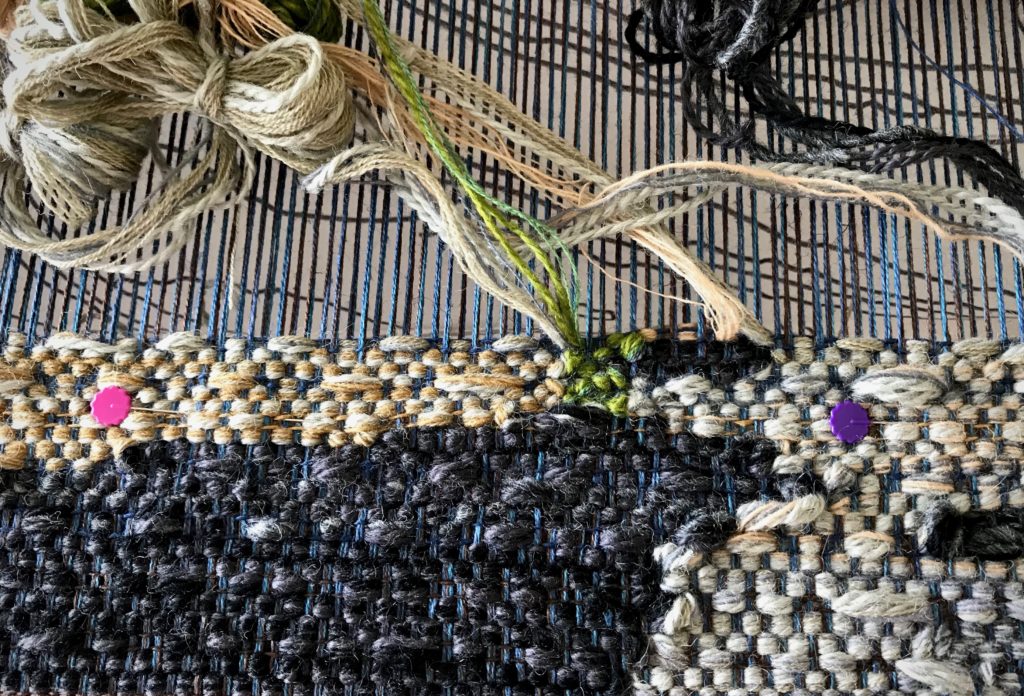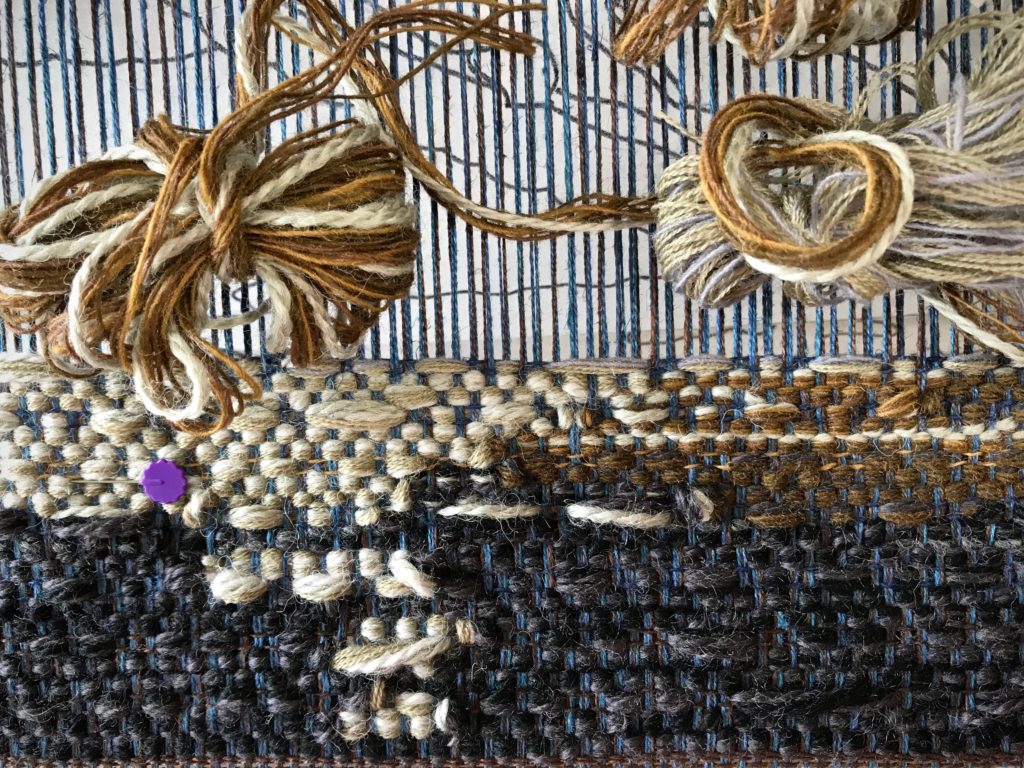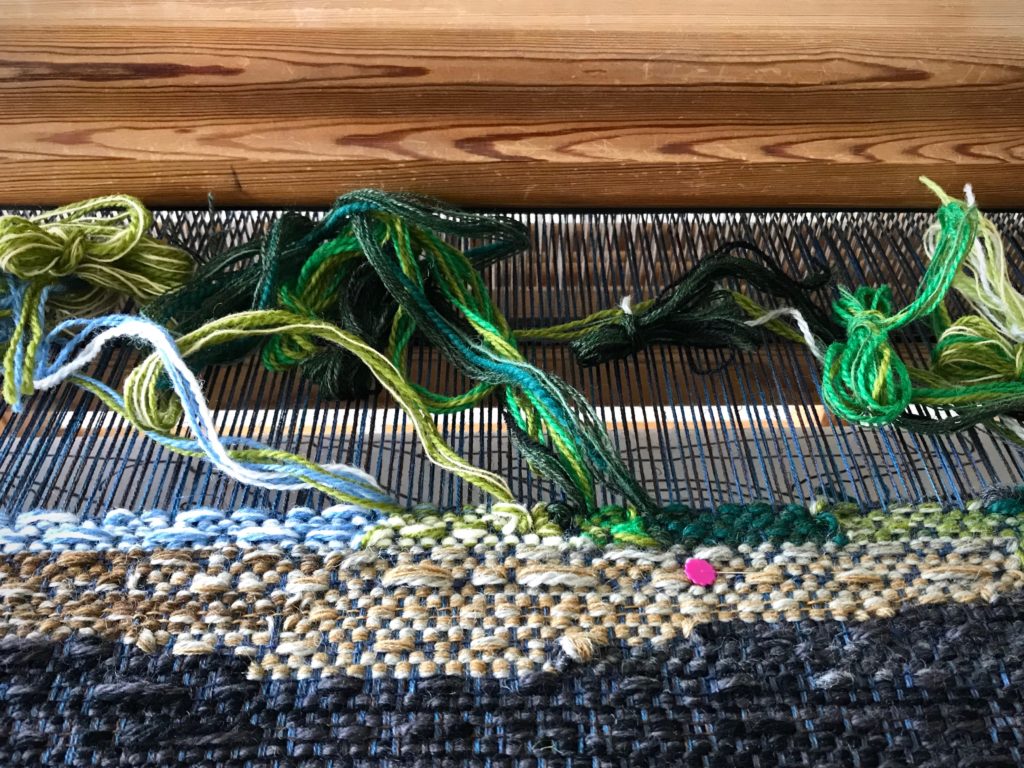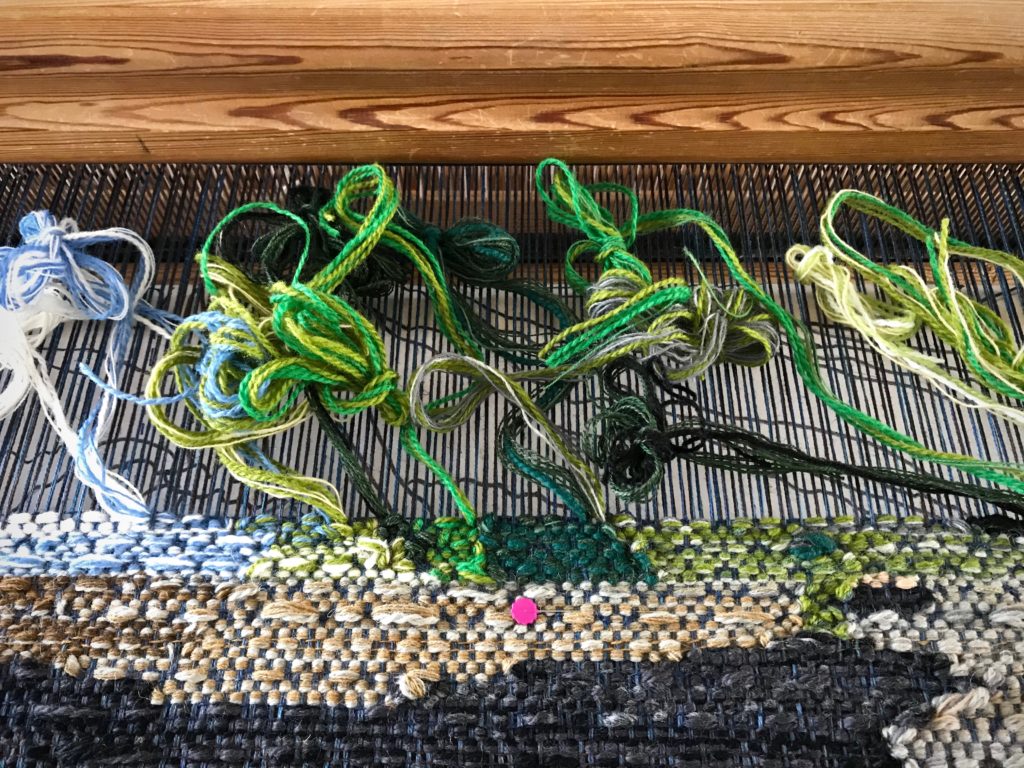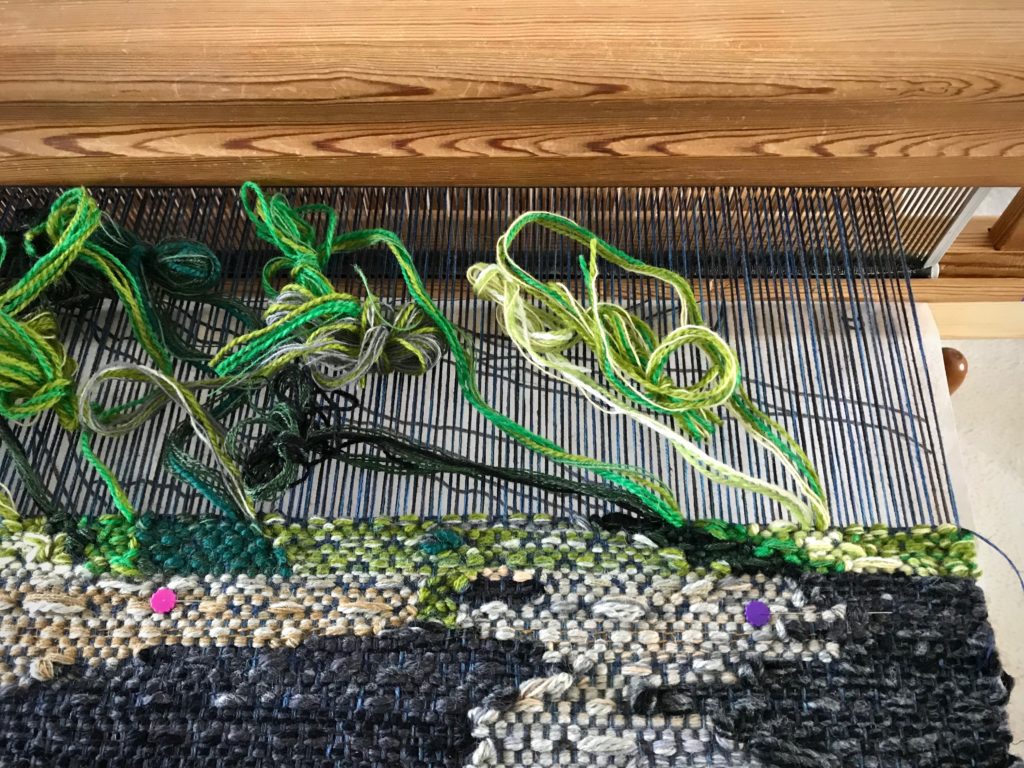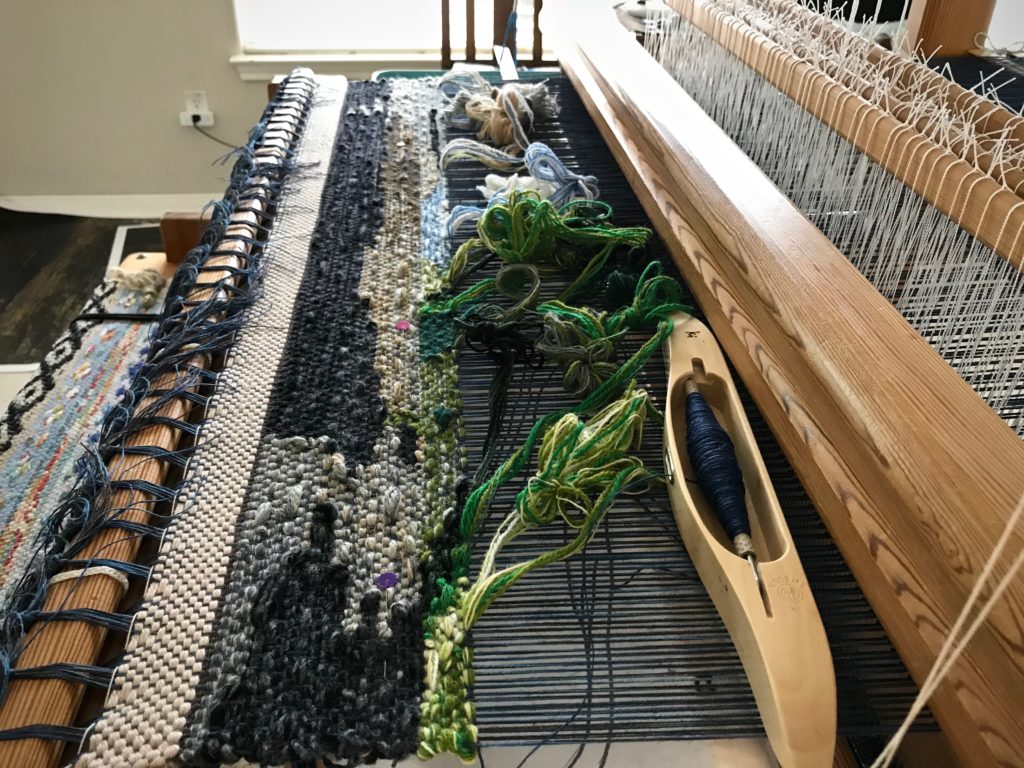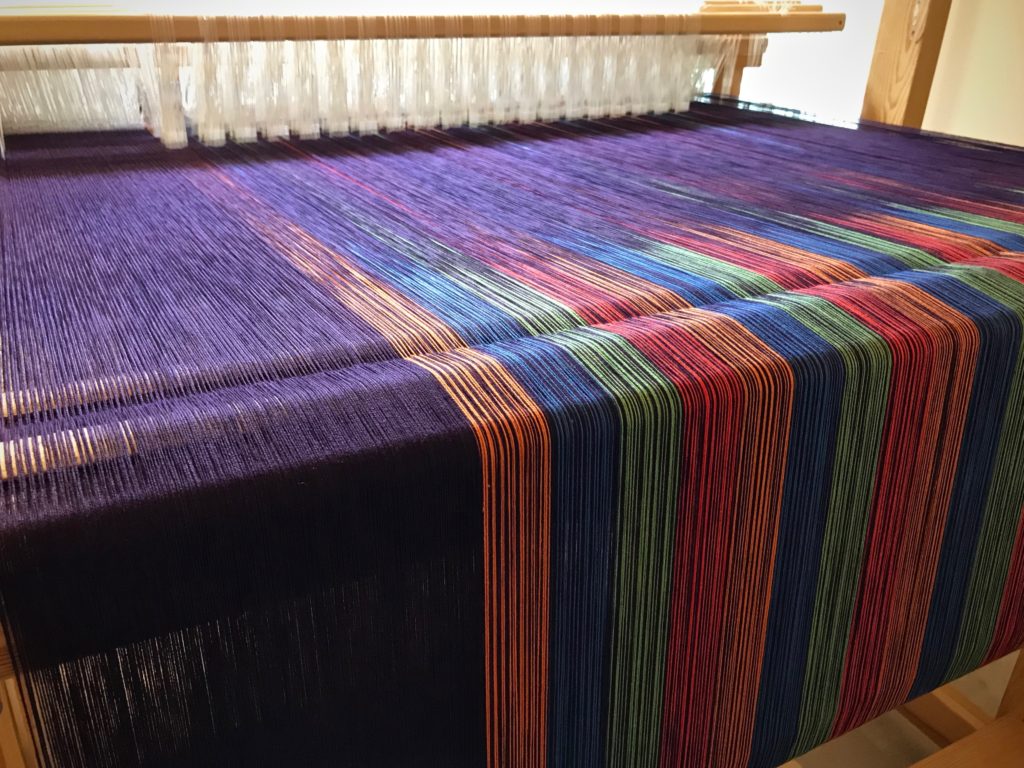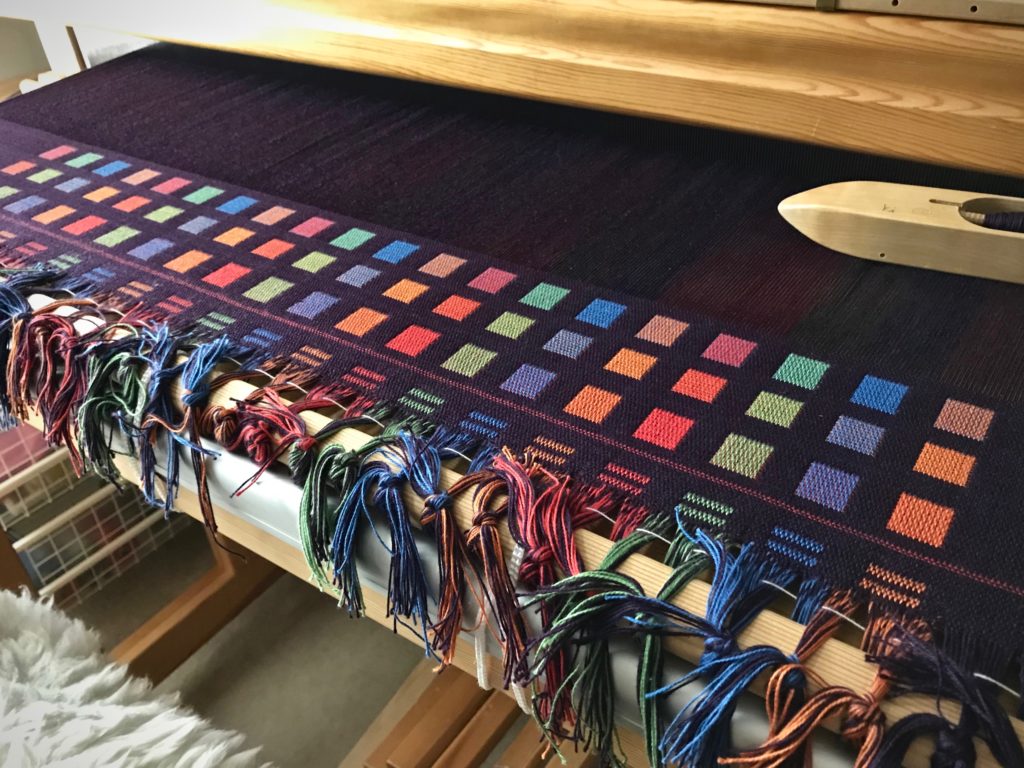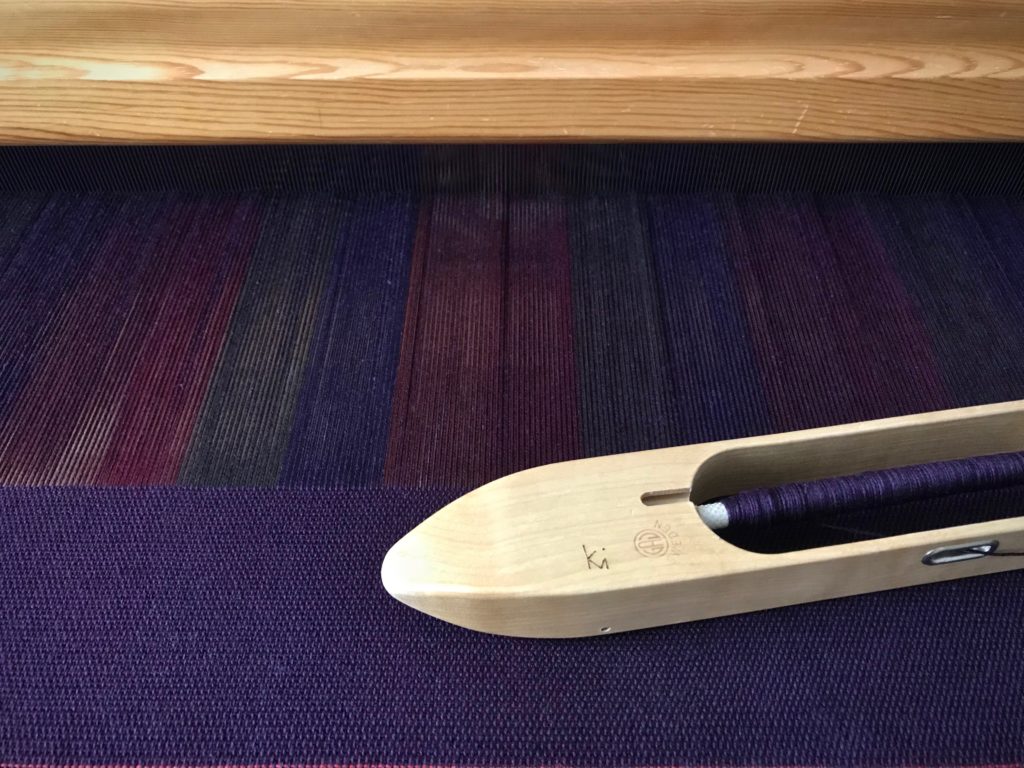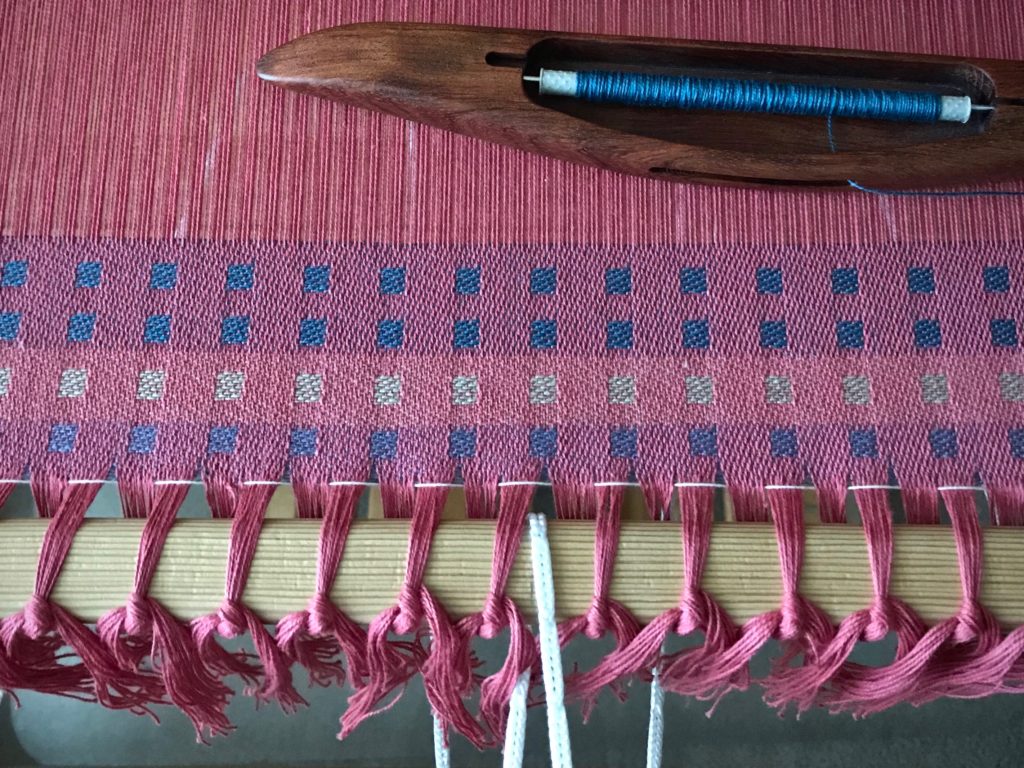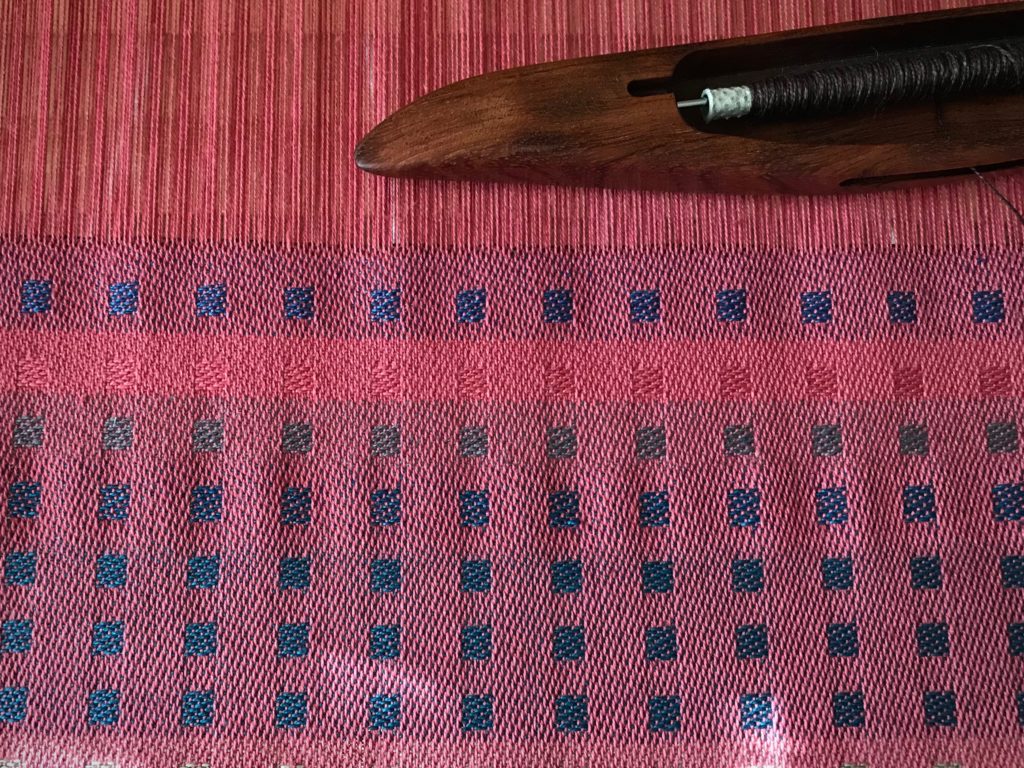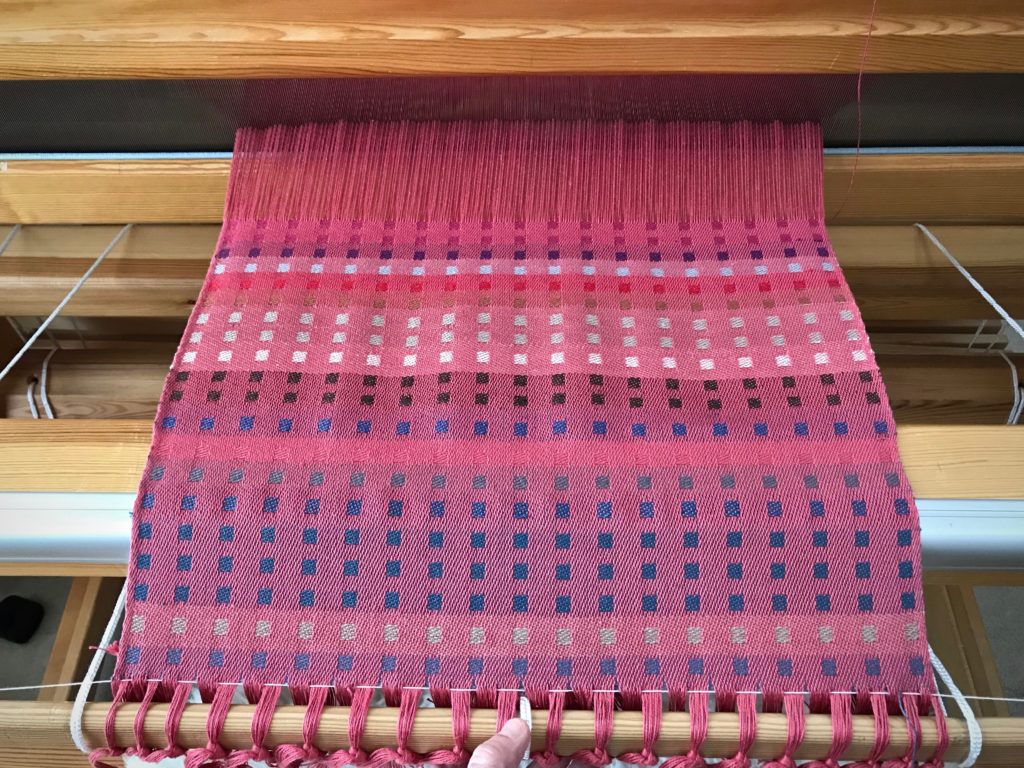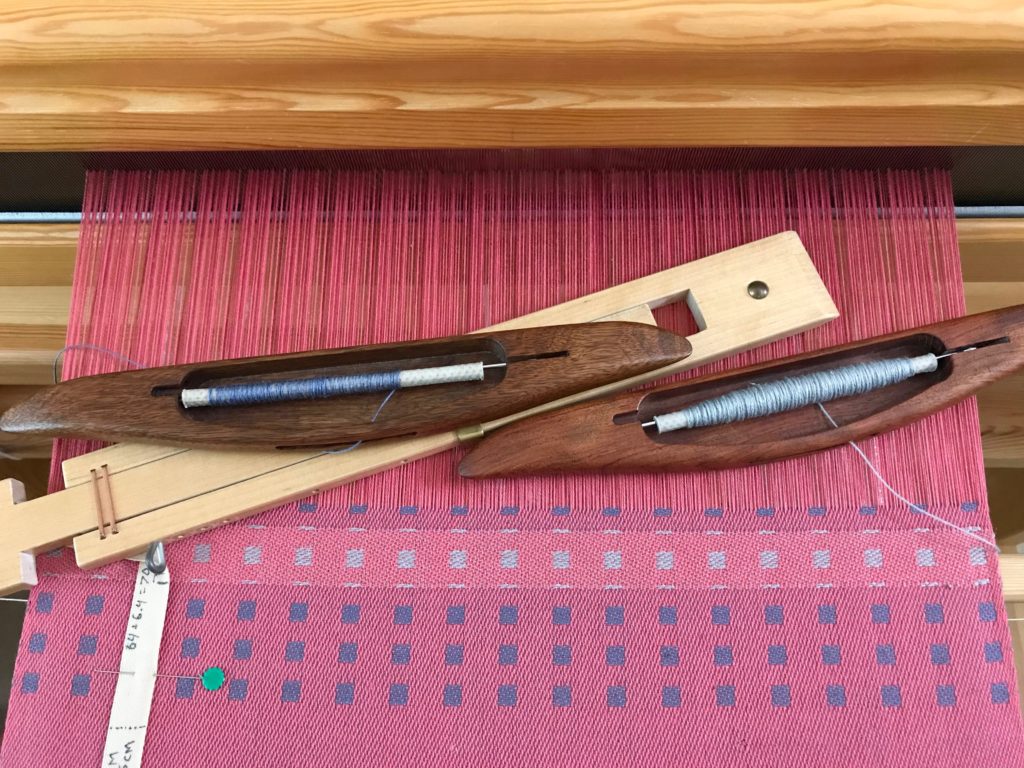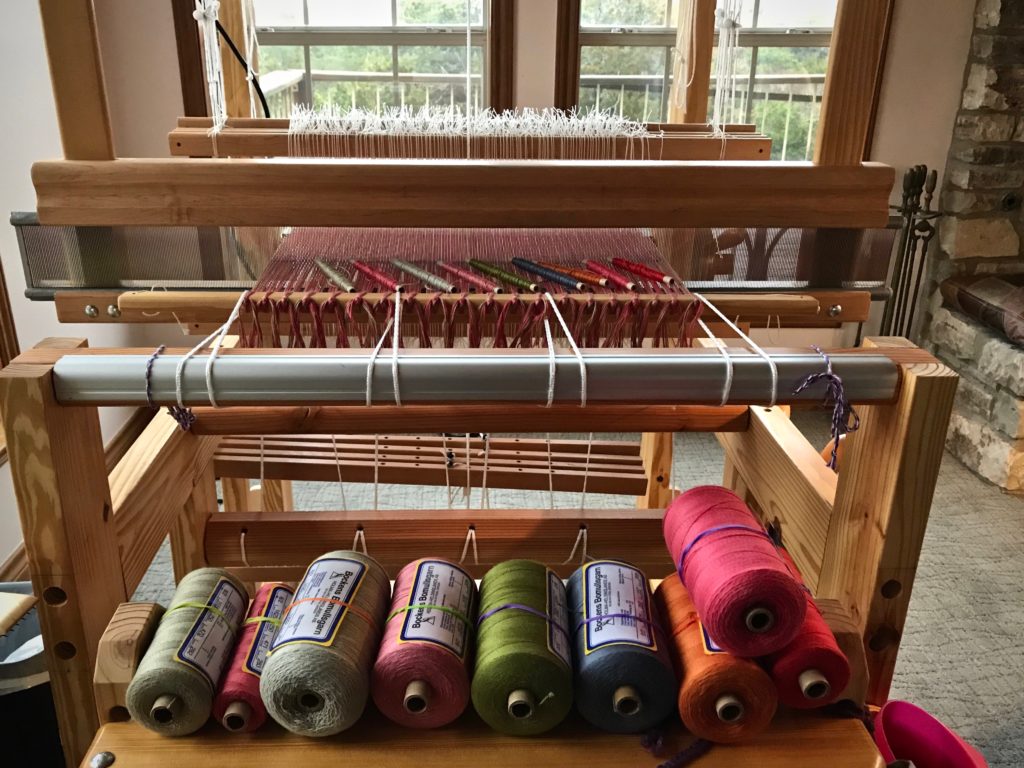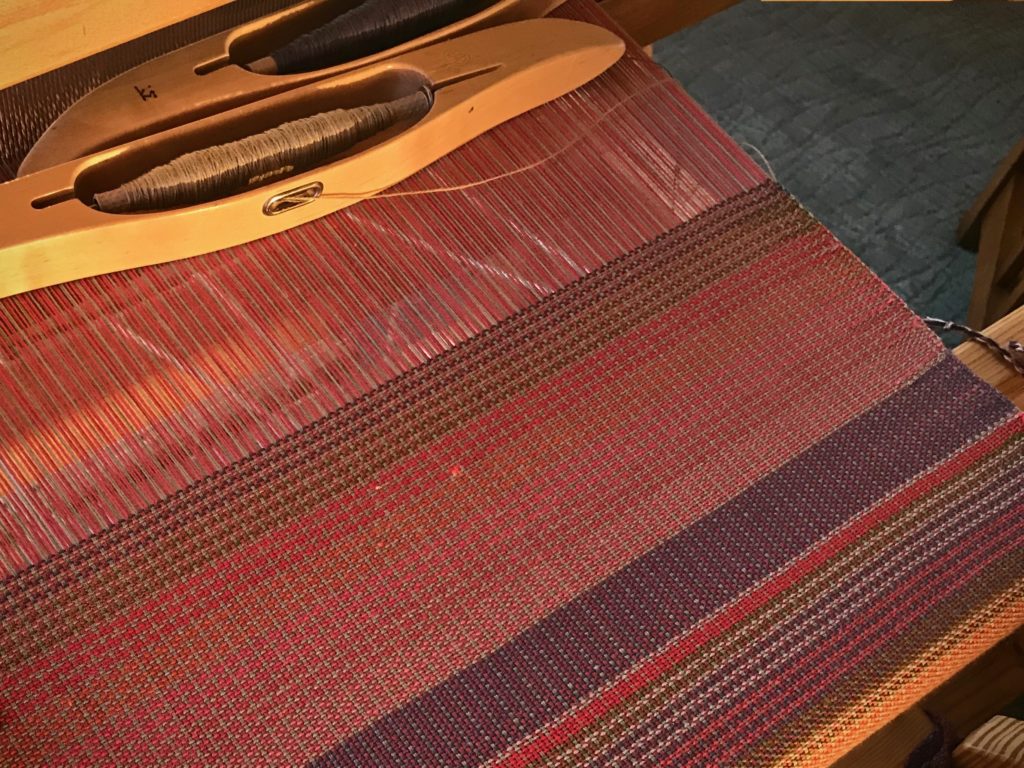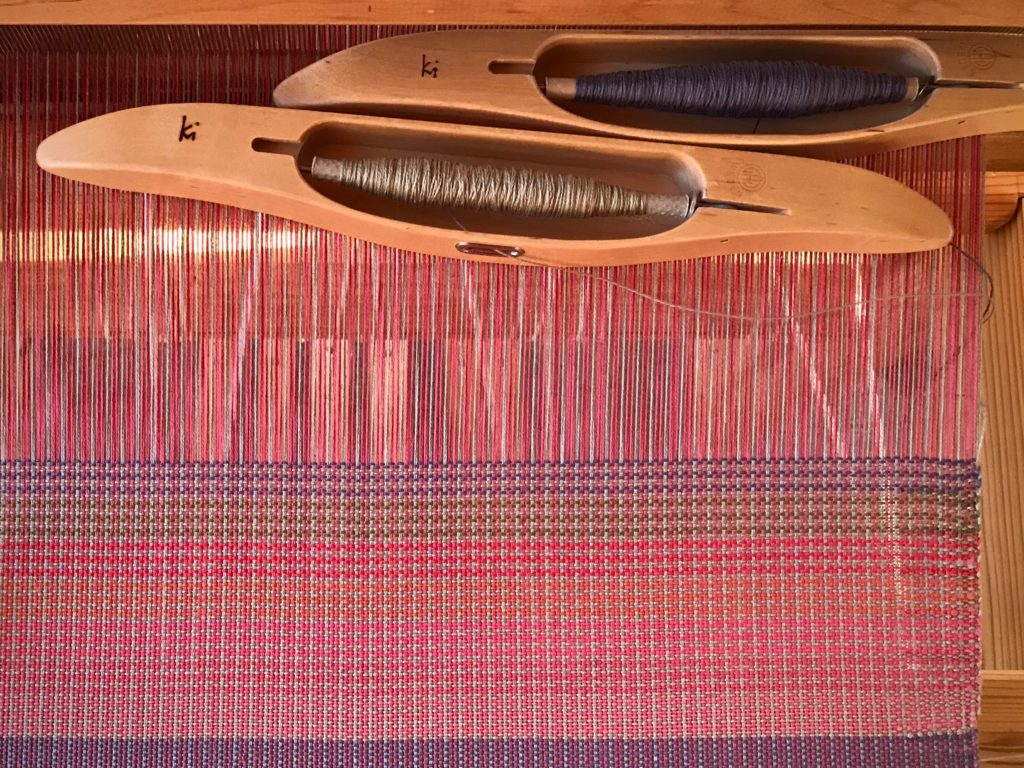Now is my chance. I’d like to try one more weft idea on this double weave warp. I ended the colorful throw, and have about fifty centimeters left for a lap blanket. After the red cutting line, I am testing some black cottolin weft. It isn’t in my original plan, nor in my sample, but I want to see how it looks.
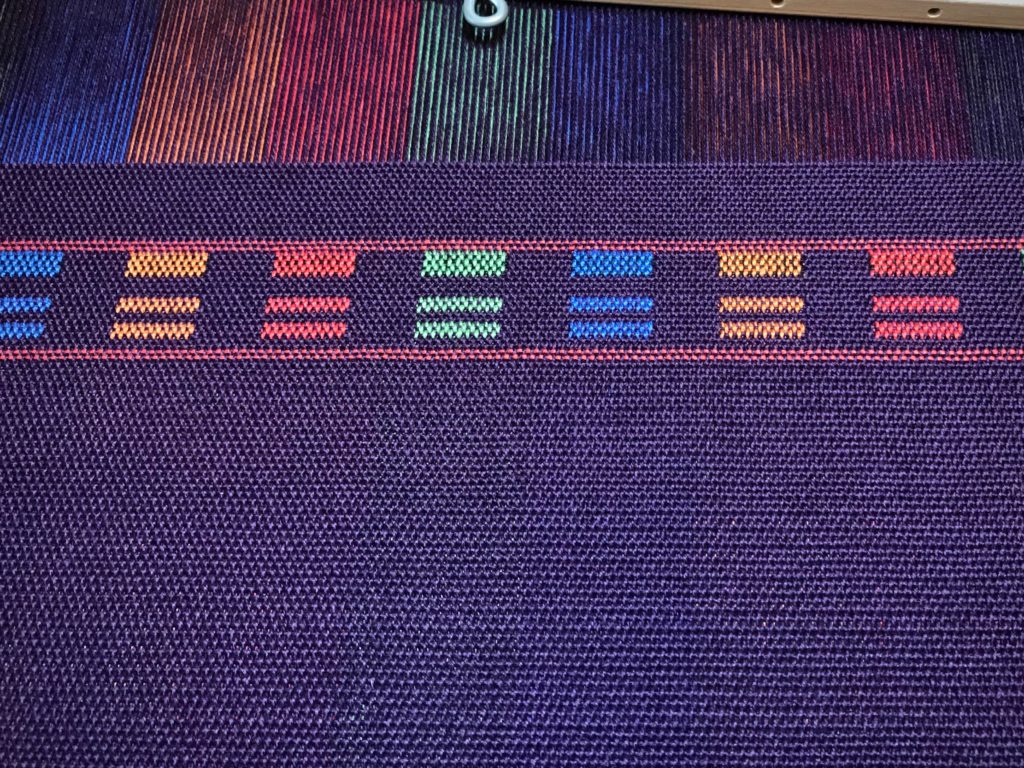
The black weft does brighten the warp colors. But that’s not the look I’m after. I would miss the mixed shades that occur as the warp stripe colors are repeated in the weft. So I am weaving the smaller piece with the same weft sequence as the larger throw. When I see the weft choices clearly, it’s not hard for me to decide which weft option to use.
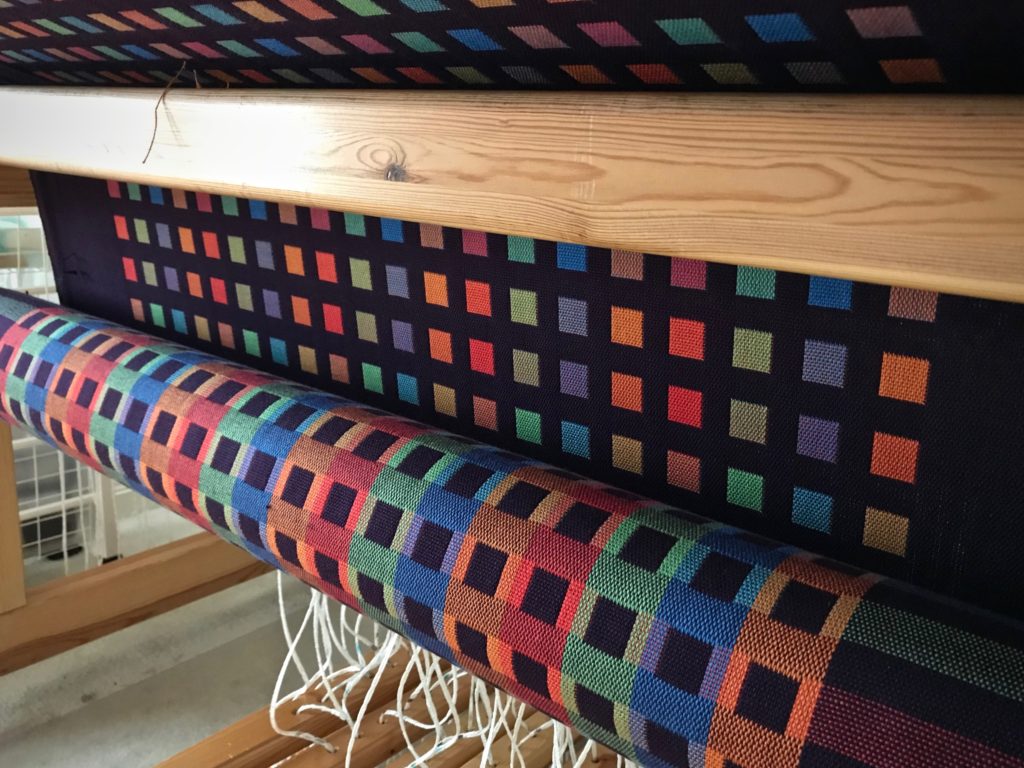
Wisdom is a treasure. It comes from seeing things through heaven’s perspective. Beware of human ideas masquerading as wisdom, leading us in the wrong direction. The treasure of wisdom that is found in Christ leads to understanding. Looking through heaven’s wisdom, my choices become clear. And it’s not hard for me to decide to stay true to the Grand Weaver’s design.
May you walk in wisdom.
With you,
Karen

